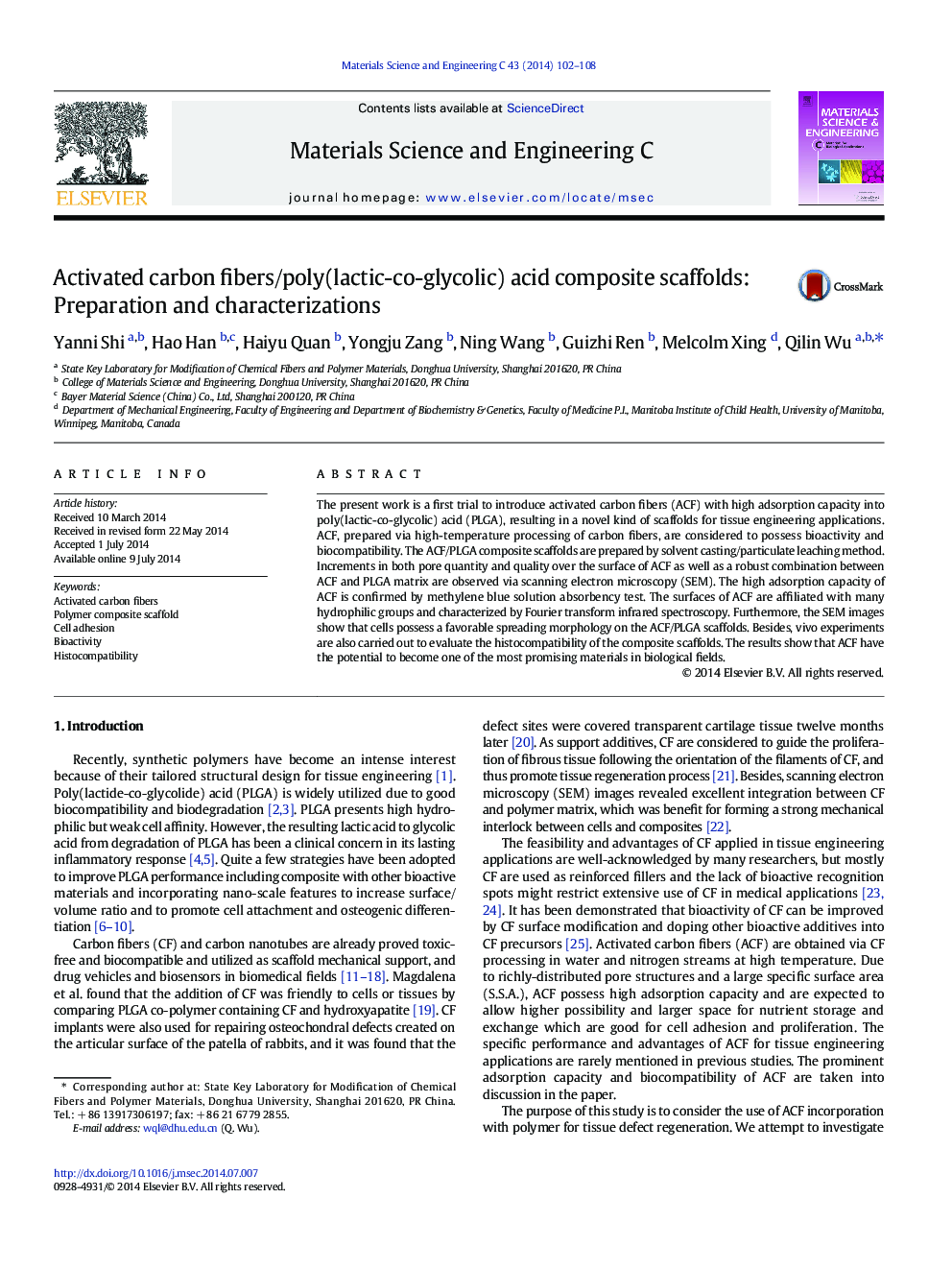| Article ID | Journal | Published Year | Pages | File Type |
|---|---|---|---|---|
| 7869861 | Materials Science and Engineering: C | 2014 | 7 Pages |
Abstract
The present work is a first trial to introduce activated carbon fibers (ACF) with high adsorption capacity into poly(lactic-co-glycolic) acid (PLGA), resulting in a novel kind of scaffolds for tissue engineering applications. ACF, prepared via high-temperature processing of carbon fibers, are considered to possess bioactivity and biocompatibility. The ACF/PLGA composite scaffolds are prepared by solvent casting/particulate leaching method. Increments in both pore quantity and quality over the surface of ACF as well as a robust combination between ACF and PLGA matrix are observed via scanning electron microscopy (SEM). The high adsorption capacity of ACF is confirmed by methylene blue solution absorbency test. The surfaces of ACF are affiliated with many hydrophilic groups and characterized by Fourier transform infrared spectroscopy. Furthermore, the SEM images show that cells possess a favorable spreading morphology on the ACF/PLGA scaffolds. Besides, vivo experiments are also carried out to evaluate the histocompatibility of the composite scaffolds. The results show that ACF have the potential to become one of the most promising materials in biological fields.
Related Topics
Physical Sciences and Engineering
Materials Science
Biomaterials
Authors
Yanni Shi, Hao Han, Haiyu Quan, Yongju Zang, Ning Wang, Guizhi Ren, Melcolm Xing, Qilin Wu,
